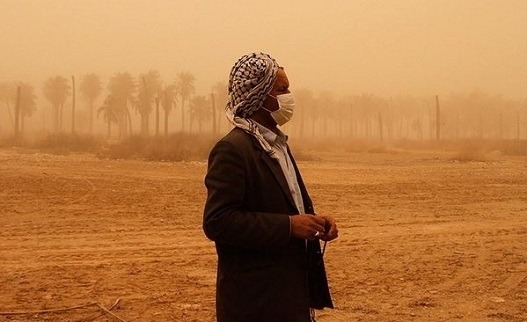Iranian regime waging environmental ethnic cleansing policy in Ahwaz

Ahwazna
As tensions between Iran’s working class and the substantial ethnic minorities long-oppressed by the Iranian-chauvinist clerical regime continue to fester in the wake of the recent uprising, the long-standing roots of revolt among groups like the Ahwazi Arab population are leading to new understandings of the regime’s deadly domestic policies.
The latest reports circulating among the Ahwazi suggest the regime, under directives straight from Ali Khamenei, plans to radically increase the rate of environmental destruction in the Ahwaz region to escalate the displacement of the local population. Most recently, orders have gone out for the confiscation of large swathes of land in northern Ahwaz for use in a sugar-cane project, which will produce massive agricultural wastewater drainage into the Karun River, adding poisons and further salinity to yet another water source. But this is merely the latest in a long history of regime projects that have worked to destroy the land, air, and water of the region.
Last year protests had already swept across the southwest region around the city of Ahwaz, as locals demanded the regime take steps to stem the growing environmental disaster caused by its wholesale extraction of the region’s resources – from oil and gas to water and agricultural commodities – after reports linked a rising death toll from suffocation, respiratory and skin diseases, and even cancer to growing pollution and dust storms.
But as the dust from last year’s protests had barely settled – and the regime dismally failed to address their plight – forcing many Ahwazis to flee their homes in search of safer air and water for their children, and the nationwide protests this January were met with brutality and death in the streets, as well as thousands of arrests and dozens of deaths in detention, many Ahwazi activists have concluded that the regime’s manufactured environmental crisis is intentional: the Iranian regime is deliberately intensifying development projects in their area which aim to increase the rate of deforestation, dry up the riverbeds, and drive the Ahwazis from their land.
The area around Ahwaz is home to Iran’s most lucrative oil and gas reserves, which has made it the site of endless extraction since the Iranian’s annexed the region in the 1920s. But Persian Chauvinism has ensured that the regime never returned any of the revenues to the Ahwaz, while also enforcing policies to deny them access to education, employment, and many other basic rights. The Ahwazi Arabs are one of several non-Persian minority groups subjected to systematic discrimination in Iran, and many activists from these groups participated in the recent protests, as they have already been protesting the regime’s racist orientation towards them for many years.
In recent years, the regime has vastly aggravated the environmental costs already borne by the region from the fossil fuels extraction by building large dams to redirect the region's rivers toward Persian-dominated areas. This has led to massive deforestation, with date palms and other indigenous trees disappearing, native swamps drying up – making way for further extraction of reserves underneath them – and clearing the way for the dust of the desert to blow back on the people in terrible, suffocating, storms. Meanwhile, the regime has also established a nuclear plant in Bushehr and Dor Khoain, to which many deaths have been attributed.
With pollution in the region reaching alarming rates – by some estimates 66 times the global average – the continued negligence, lack of services, and now the apparent intentional decimation of Ahwazi land, the local population is seething with anger, and they see “Persian supremacy” and racism as the root cause of the regime’s brutality toward them.


